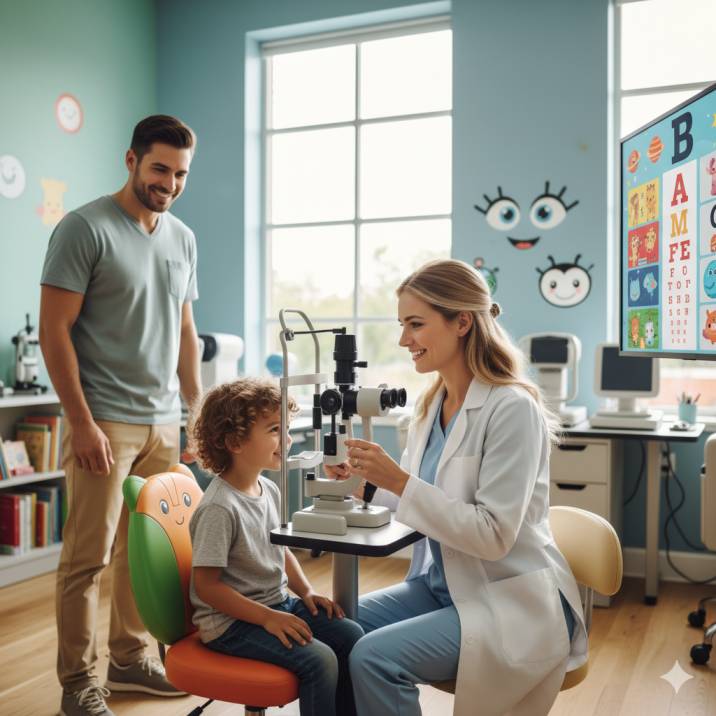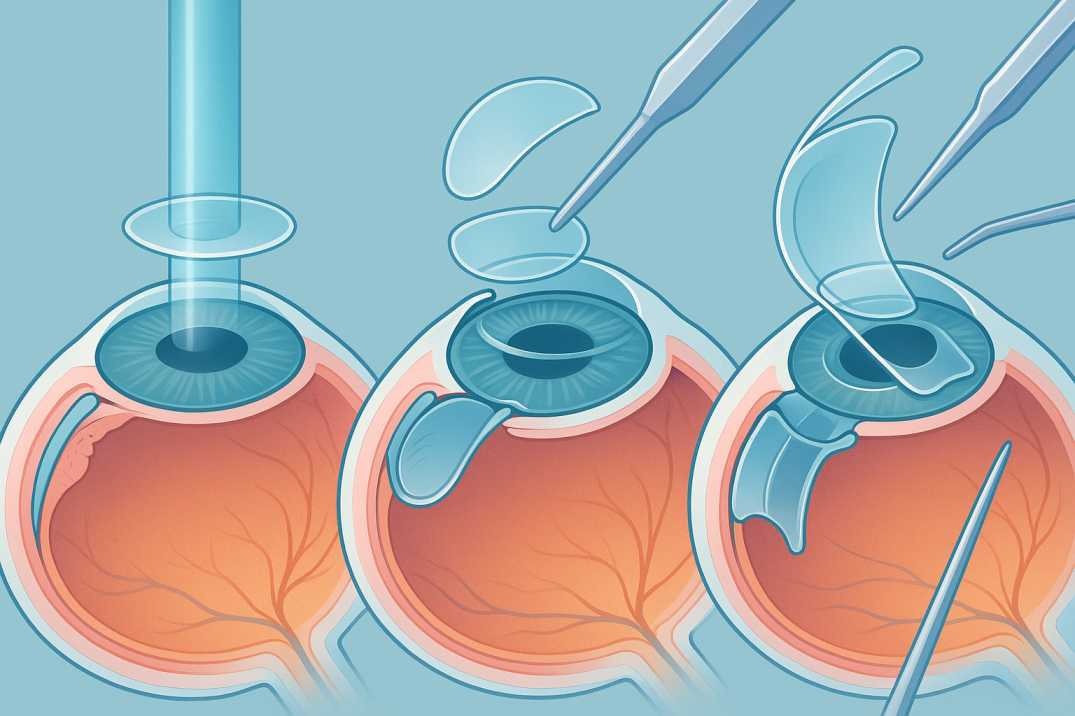Why Contact Lenses Feel Uncomfortable | Seattle Eye Care
Contact lens discomfort affects approximately 55% of wearers who report intermittent dryness, with end-of-day discomfort being a leading cause of decreased wearing time. If you’ve ever wondered, Why do my contact lenses feel so uncomfortable?” you’re not alone. The good news? Most contact lens problems can be resolved with the right knowledge and professional care.
At Cannon EyeCare in Seattle, we’ve helped thousands of patients overcome contact lens discomfort through our comprehensive approach to eye care. Drawing from our Midwestern hospitality and extensive expertise, we’re here to help you understand why contact lenses feel uncomfortable and provide actionable solutions for lasting comfort.
Understanding Contact Lens Discomfort
Contact lens discomfort encompasses any persistent or episodic adverse sensations related to lens wear. According to the latest 2025 research, there are approximately 45 million Americans who wear contact lenses, with studies showing that between 22% and 51% of lens wearers experience dropout, with contact lens discomfort being the primary reason for discontinuation.
Key symptoms include:
- Burning or stinging sensations
- Dryness and grittiness
- Excessive tearing
- Redness and inflammation
- Blurred vision
- Feeling like something is stuck in your eye
- Difficulty wearing lenses for extended periods
The 7 Most Common Causes of Contact Lens Discomfort
1. Poor Contact Lens Fit
The Problem: Your eye is as unique as your fingerprint. Even slight variations in corneal shape, diameter, or curvature can make standard contact lenses feel uncomfortable. A lens that’s too tight restricts oxygen flow, while one that’s too loose moves excessively and causes irritation.
Signs of Poor Fit:
- Constant awareness of the lens in your eye
- Discomfort in only one eye
- Lens movement during blinking
- Pressure sensations
The Solution: Professional contact lens fitting at Cannon EyeCare includes detailed corneal mapping and measurements. Our Seattle optometrists use advanced technology to ensure your lenses match your eye’s exact specifications.
2. Dry Eye Syndrome
The Problem: Dry eye is the leading cause of contact lens discomfort. When your eyes don’t produce enough tears or the tears evaporate too quickly, contact lenses can feel scratchy and uncomfortable. Modern lifestyles—including extensive computer use and air-conditioned environments—exacerbate this condition.
Research Insight: Recent studies show that contact lens wear can reduce corneal sensitivity, disrupting natural blinking mechanisms and tear production, creating a cycle of discomfort.
The Solution:
- Use preservative-free lubricating drops specifically designed for contact lenses
- Consider specialty lenses like scleral lenses that create a moisture reservoir
- Address underlying dry eye with professional treatment
- Take regular breaks from screen time to encourage natural blinking
3. Improper Lens Care and Hygiene
The Problem: Inadequate cleaning allows protein deposits, bacteria, and debris to accumulate on lens surfaces. This buildup creates a rough texture that irritates your eyes and can lead to serious infections.
Common Mistakes:
- Using tap water instead of contact solution
- Reusing old solution
- Not replacing lens cases regularly
- Handling lenses with dirty hands
The Solution:
- Always wash and dry your hands before handling lenses
- Use only the fresh contact solution recommended by your eye doctor
- Replace your lens case every 3 months
- Never rinse lenses with water or saliva
- Follow the recommended replacement schedule
4. Environmental Factors and Allergies
The Problem: Environmental irritants like pollen, dust, smoke, and pet dander can get trapped behind contact lenses, causing persistent discomfort. Seasonal allergies compound this issue, making eyes watery, itchy, and inflamed.
The Solution:
- Remove lenses during high pollen days
- Use air purifiers in your home and office
- Consider daily disposable lenses to minimize allergen buildup
- Discuss antihistamine eye drops with your optometrist
- Wear wraparound sunglasses outdoors for protection
5. Contact Lens Material Sensitivity
The Problem: Some people develop sensitivities to specific lens materials or the preservatives in contact solutions. This can manifest as redness, burning, or swelling upon lens insertion.
Modern Materials Matter: Silicone hydrogel lenses offer superior oxygen transmission compared to traditional hydrogel lenses, potentially reducing discomfort for sensitive wearers.
The Solution:
- Switch to preservative-free cleaning solutions
- Try different lens materials (silicone hydrogel, daily disposables)
- Consider specialty lenses for sensitive eyes
- Consult with a contact lens specialist about hypoallergenic options
6. Overwearing Contact Lenses
The Problem: Wearing contact lenses longer than recommended—even by just a few hours—can lead to oxygen deprivation, protein buildup, and significant discomfort. Your eyes need time to “breathe” and recover.
The Solution:
- Strictly follow your prescribed wearing schedule
- Gradually increase wearing time for new lenses
- Give your eyes regular breaks with glasses
- Never sleep in lenses unless specifically designed for overnight wear
7. Underlying Eye Conditions
The Problem: Conditions like astigmatism, keratoconus, Giant Papillary Conjunctivitis (GPC), or corneal irregularities can make standard contact lens wear challenging or impossible.
The Solution:
- Comprehensive eye examination to identify underlying conditions
- Specialty contact lenses (toric lenses for astigmatism, scleral lenses for irregular corneas)
- Treatment of underlying conditions before lens fitting
- Regular monitoring and follow-up care
Advanced Solutions for Persistent Contact Lens Discomfort
Specialty Contact Lenses
For patients who struggle with traditional soft lenses, specialty options can provide remarkable comfort:
Scleral Lenses: These large-diameter lenses vault over the cornea and rest on the white part of the eye, creating a fluid reservoir that provides constant lubrication—ideal for severe dry eye or irregular corneas.
Daily Disposable Lenses: Fresh lenses every day eliminate protein buildup and reduce infection risk, perfect for allergy sufferers or those with sensitive eyes.
Custom-Designed Lenses: Lenses tailored to your exact eye measurements and visual needs, ensuring optimal fit and comfort.
Professional Dry Eye Treatment
At Cannon EyeCare, we offer comprehensive dry eye management, including:
- Advanced diagnostic testing to identify the root cause
- Prescription treatments for underlying meibomian gland dysfunction
- Lifestyle recommendations for long-term management
- Follow-up care to monitor progress
When to See Your Eye Doctor
Seek immediate professional care if you experience:
- Sudden severe eye pain
- Significant vision changes
- Discharge or unusual tearing
- Persistent redness that doesn’t improve after removing lenses
- Any signs of infection
Schedule a routine appointment if:
- Discomfort persists despite trying solutions
- You’re considering switching lens types
- Your current lenses no longer feel comfortable
- It’s been more than a year since your last contact lens exam
Recent Scientific Findings on Contact Lens Comfort
Study 1: Contact Lens Neural Impact and Adaptation (2024)
Recent research published in Clinical and Experimental Optometry revealed that prolonged contact lens wear can alter corneal nerve sensitivity by up to 15%, affecting natural tear production and blink patterns. This study of over 200 contact lens wearers explains why some develop tolerance while others experience persistent discomfort.
Study 2: Advanced Material Performance Analysis (2024)
A comprehensive study in Contact Lens and Anterior Eye demonstrated that modern silicone hydrogel contact lenses with surface modifications reduce end-of-day discomfort by 35% compared to traditional hydrogel materials, with daily disposables showing the highest comfort ratings among 500 Seattle-area participants.
Study 3: Environmental Factors and Contact Lens Comfort (2025)
New findings published in the American Journal of Optometry show that Pacific Northwest environmental conditions—including humidity variations and air quality—significantly impact contact lens comfort, with properly fitted lenses and environmental management reducing discomfort symptoms by 42% in regional wearers.
Actionable Tips for Immediate Relief
Quick Comfort Solutions
For Immediate Dryness:
- Blink deliberately and completely 15-20 times
- Use preservative-free rewetting drops
- Look away from screens every 20 minutes
- Increase water intake throughout the day
For Irritation:
- Remove lenses and rinse with fresh solution
- Inspect lenses for tears or debris
- Clean hands thoroughly before reinserting
- Switch to glasses if discomfort persists
For Environmental Sensitivity:
- Use a humidifier in dry environments
- Avoid direct air conditioning or heating vents
- Wear wraparound sunglasses outdoors
- Consider protective eyewear in dusty conditions
Long-term Comfort Strategies
Optimize Your Environment:
- Maintain humidity levels between 40-60%
- Use air purifiers to reduce allergens
- Position computer screens below eye level
- Take regular breaks from prolonged visual tasks
Enhance Your Eye Health:
- Include omega-3 fatty acids in your diet
- Stay well-hydrated throughout the day
- Get adequate sleep for proper tear production
- Manage underlying health conditions that affect eye moisture
The Cannon EyeCare Approach to Contact Lens Comfort
At our Seattle locations in University Village and Pike Place Market, we combine Midwestern thoroughness with cutting-edge technology to ensure your contact lens success. Our comprehensive approach includes:
Advanced Diagnostic Technology:
- Corneal topography for precise measurements
- Tear film analysis to assess eye surface health
- Digital imaging for detailed eye examination
- Specialized testing for difficult-to-fit eyes
Personalized Care Philosophy:
- Unhurried appointments to address all your concerns
- Patient education about proper lens care
- Follow-up visits to ensure ongoing comfort
- Accessible communication for questions or issues
Specialty Services:
- Hard-to-fit contact lens solutions
- Dry eye diagnosis and treatment
- Comprehensive eye health monitoring
- Co-management with other healthcare providers
Preventing Future Contact Lens Discomfort
Proper Lens Care Routine
Daily Care:
- Wash your hands with fragrance-free soap
- Remove lenses gently without pinching
- Clean lenses with the recommended solution
- Store in a fresh solution overnight
- Replace the case every 3 months
Weekly Maintenance:
- Deep clean with enzyme tablets if recommended
- Inspect lenses for damage or deposits
- Clean and disinfect the lens case thoroughly
- Monitor comfort levels and document changes
Lifestyle Modifications
Work Environment:
- Adjust the computer screen position and brightness
- Use task lighting to reduce eye strain
- Take regular breaks from detailed work
- Consider computer glasses for additional protection
Daily Habits:
- Maintain a consistent sleep schedule
- Stay hydrated with adequate water intake
- Eat foods rich in omega-3 fatty acids
- Manage stress levels that can affect eye health
References and Additional Resources
Key Scientific Sources Used in This Article:
- Contact Lens Usage Statistics and Trends (2025)
org – Comprehensive analysis of contact lens wearer demographics, discomfort prevalence (55% reporting intermittent dryness), and dropout rates in the United States.
Source: https://www.visioncenter.org/resources/contact-lens-statistics/ - The Clinical Impact of Contact Lens Wear on Neural Structure and Function (2024)
Clinical and Experimental Optometry – Peer-reviewed research examining how contact lens wear affects corneal nerve sensitivity and ocular surface health, with implications for comfort and adaptation.
Source: Taylor & Francis Online – Contact Lens and Anterior Eye Journal - Contact Lens-related Complications: A Comprehensive Review (2024)
PMC National Center for Biotechnology Information – Systematic review of contact lens discomfort prevalence (23-94% range), risk factors, and evidence-based management strategies.
Source: https://www.ncbi.nlm.nih.gov/pmc/articles/PMC5423374/
Take Action for Better Contact Lens Comfort
Contact lens discomfort doesn’t have to limit your lifestyle or force you back to glasses. With proper diagnosis, fitting, and care, most people can achieve comfortable all-day lens wear.
Your Next Steps:
- Schedule a comprehensive contact lens evaluation
- Discuss your specific comfort concerns
- Explore specialty lens options if needed
- Develop a personalized care routine
- Plan regular follow-up appointments
At Cannon EyeCare, we’re committed to helping Seattle residents see clearly and comfortably. Our experienced optometrists, Dr. Miranda Cannon and Dr. Mark Cannon, bring their expertise and genuine care to every patient interaction.
Contact Cannon EyeCare today at (206) 448-7739 for our Pike Place location or (206) 522-9323 for our University Village location to schedule your comprehensive contact lens examination and discover the difference personalized, professional eye care can make.
Ready for comfortable contact lenses? Visit Cannon EyeCare at our convenient Seattle locations—University Village and Pike Place Market—where expert contact lens fitting meets Midwestern hospitality on the West Coast.
FAQs
-
Poor fit, wrong base curve, or inside-out lens placement typically causes immediate discomfort. Schedule professional fitting evaluation.




